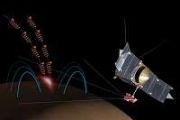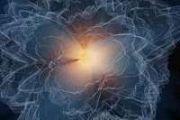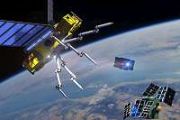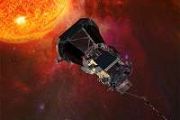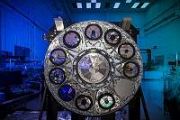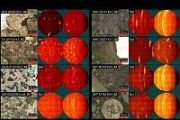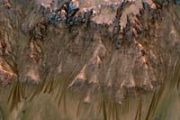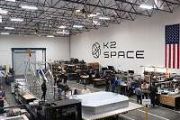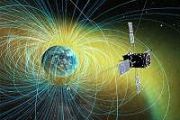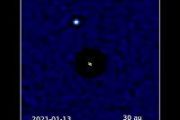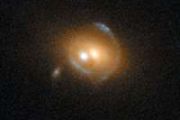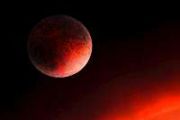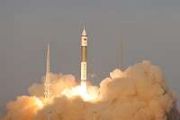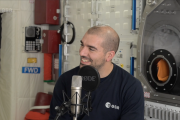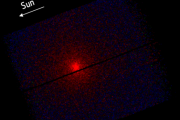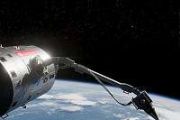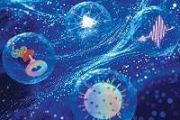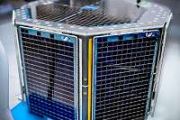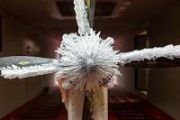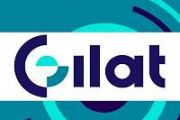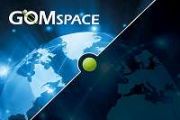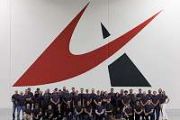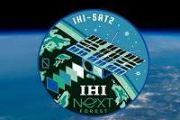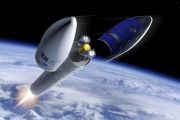
Copernical Team
How to find a comet before it hits Earth
 Q: How do you find a comet that could pose a threat to Earth but hasn't passed our planet in the last 200 years or more?
A: You look for its footprint.
This is the basis of research led by Samantha Hemmelgarn, a first-year doctoral student in Northern Arizona University's Department of Astronomy and Planetary Science. In a study published in Planetary Science Journal in November, she
Q: How do you find a comet that could pose a threat to Earth but hasn't passed our planet in the last 200 years or more?
A: You look for its footprint.
This is the basis of research led by Samantha Hemmelgarn, a first-year doctoral student in Northern Arizona University's Department of Astronomy and Planetary Science. In a study published in Planetary Science Journal in November, she Massive eruptions did not trigger dinosaur extinction
 Massive volcanic eruptions in India, once theorized as a potential cause of dinosaur extinction, likely played a minimal role in their demise, according to new research by climate scientists at Utrecht University and the University of Manchester. Their findings suggest that while these eruptions caused a temporary cooling period, their climatic effects had dissipated thousands of years before th
Massive volcanic eruptions in India, once theorized as a potential cause of dinosaur extinction, likely played a minimal role in their demise, according to new research by climate scientists at Utrecht University and the University of Manchester. Their findings suggest that while these eruptions caused a temporary cooling period, their climatic effects had dissipated thousands of years before th China's space journey continues apace
 The first-ever samples retrieved from the moon's far side, an iconic feat achieved by China's most recent lunar expedition, Chang'e 6, were on display at the 15th China International Aviation and Aerospace Exhibition, which took place in Zhuhai, Guangdong province, from Nov 12 to 17.
This was the first time the valuable lunar substances had been shown to the public since they were brought
The first-ever samples retrieved from the moon's far side, an iconic feat achieved by China's most recent lunar expedition, Chang'e 6, were on display at the 15th China International Aviation and Aerospace Exhibition, which took place in Zhuhai, Guangdong province, from Nov 12 to 17.
This was the first time the valuable lunar substances had been shown to the public since they were brought Airbus US Space and Defense partners with Aerostar to advance stratospheric ISR technologies
 Airbus U.S. Space and Defense and Aerostar successfully completed a joint Internal Research and Development (IRAD) stratospheric test flight as part of their Cooperative Research and Development Agreement (CRADA). The test demonstrated the use of satellite backhaul technologies on high-altitude platforms for enhanced Intelligence, Surveillance, and Reconnaissance (ISR) capabilities.
The mi
Airbus U.S. Space and Defense and Aerostar successfully completed a joint Internal Research and Development (IRAD) stratospheric test flight as part of their Cooperative Research and Development Agreement (CRADA). The test demonstrated the use of satellite backhaul technologies on high-altitude platforms for enhanced Intelligence, Surveillance, and Reconnaissance (ISR) capabilities.
The mi Old Moon's young crust mystery explained
 Scientists have long debated the Moon's true age, with estimates varying by hundreds of millions of years. While some studies suggest the Moon formed 4.35 billion years ago, others place its origin at 4.51 billion years. Adding to the complexity, most lunar rock samples point to a younger age, but a handful of ancient zircon crystals appear much older. Researchers now propose that the Moon's cru
Scientists have long debated the Moon's true age, with estimates varying by hundreds of millions of years. While some studies suggest the Moon formed 4.35 billion years ago, others place its origin at 4.51 billion years. Adding to the complexity, most lunar rock samples point to a younger age, but a handful of ancient zircon crystals appear much older. Researchers now propose that the Moon's cru NASA payload to study heat flow beneath the Moon's surface
 Earth's closest celestial neighbor, the Moon, has seen only 5% of its surface directly explored by humans. Decades of study, including NASA's Apollo-era missions and the 2011-2012 GRAIL (Gravity Recovery and Interior Laboratory) mission, culminated in the discovery in 2023 of a liquid outer core surrounding a solid inner core within the Moon.
As NASA's Artemis program intensifies preparati
Earth's closest celestial neighbor, the Moon, has seen only 5% of its surface directly explored by humans. Decades of study, including NASA's Apollo-era missions and the 2011-2012 GRAIL (Gravity Recovery and Interior Laboratory) mission, culminated in the discovery in 2023 of a liquid outer core surrounding a solid inner core within the Moon.
As NASA's Artemis program intensifies preparati Webb offers best glimpse ever into the icy planetesimals of the early solar system
 New studies led by researchers at the University of Central Florida offer for the first time a clearer picture of how the outer solar system formed and evolved based on analyses of trans-Neptunian objects (TNOs) and centaurs.
The findings, published in Nature Astronomy, reveal the distribution of ices in the early solar system and how TNOs evolve when they travel inward into the region of
New studies led by researchers at the University of Central Florida offer for the first time a clearer picture of how the outer solar system formed and evolved based on analyses of trans-Neptunian objects (TNOs) and centaurs.
The findings, published in Nature Astronomy, reveal the distribution of ices in the early solar system and how TNOs evolve when they travel inward into the region of University of Houston scientists solving meteorological mysteries on Mars
 A groundbreaking achievement by scientists at the University of Houston is changing our understanding of climate and weather on Mars and providing critical insights into Earth's atmospheric processes as well.
The study, led by Larry Guan, a graduate student in the Department of Physics at UH's College of Natural Sciences and Mathematics, under the guidance of his advisors, Professor Liming
A groundbreaking achievement by scientists at the University of Houston is changing our understanding of climate and weather on Mars and providing critical insights into Earth's atmospheric processes as well.
The study, led by Larry Guan, a graduate student in the Department of Physics at UH's College of Natural Sciences and Mathematics, under the guidance of his advisors, Professor Liming Evidence exists for hidden water reservoirs and rare magmas on ancient Mars
 A new study explores how variations in Mars' crustal thickness during its ancient history may have influenced the planet's magmatic evolution and hydrological systems. The research, published in Earth and Planetary Science Letters, suggests that the thick crust of Mars' southern highlands formed billions of years ago generated granitic magmas and sustained vast underground aquifers, challenging
A new study explores how variations in Mars' crustal thickness during its ancient history may have influenced the planet's magmatic evolution and hydrological systems. The research, published in Earth and Planetary Science Letters, suggests that the thick crust of Mars' southern highlands formed billions of years ago generated granitic magmas and sustained vast underground aquifers, challenging Frosty landscape captured at Mars' South Pole
 The latest image from ESA's Mars Express offers a stunning glimpse of Mars' south pole, resembling a winter wonderland with its icy hilltops and snow-like layers. However, this scenic view belies the reality of summer on Mars, where the Sun's heat drives the retreat of seasonal ice formations.
A closer examination of the left side of the image reveals dark areas where the carbon dioxide ic
The latest image from ESA's Mars Express offers a stunning glimpse of Mars' south pole, resembling a winter wonderland with its icy hilltops and snow-like layers. However, this scenic view belies the reality of summer on Mars, where the Sun's heat drives the retreat of seasonal ice formations.
A closer examination of the left side of the image reveals dark areas where the carbon dioxide ic 
